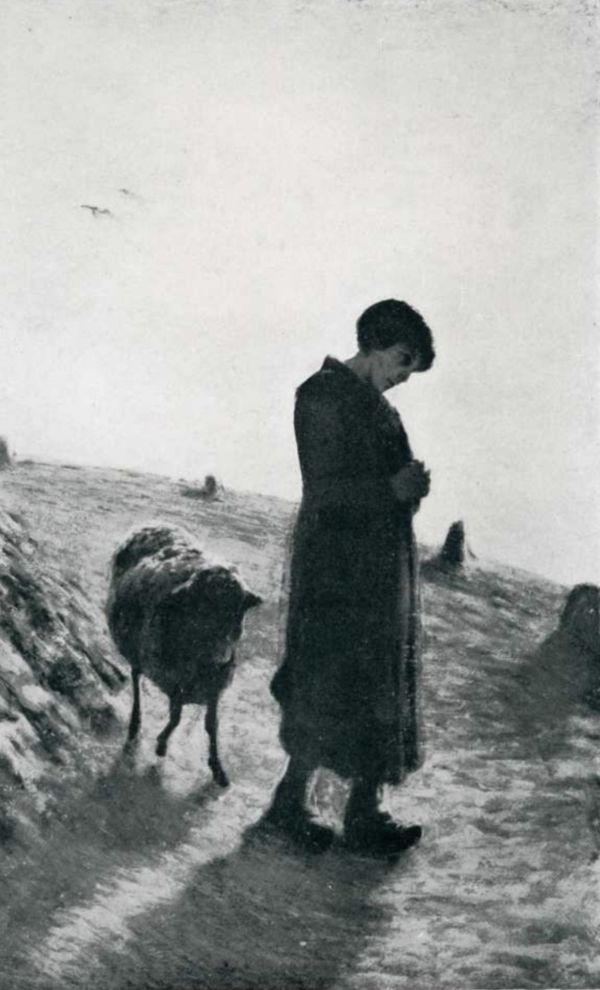You see Him in the shepherd, when he expounds his life
(Jn 10:1-10. 10:11-18. 10:27-30)
We are used to imagining Jesus as a Shepherd surrounded by the flock with a sheep supported on his shoulders or in his arms. Such is the reproduction of the parable in Lk 15 and Mt 18.
As an alternative to the Synoptics, the Fourth Gospel speaks of Jesus’ distinctive trait as a true Shepherd, taking its cue from David's bold character in the episode reported by 1Sam 17:32-36:
«David said to Saul “Let no one lose heart on account of this Philistine; your servant will go and fight him”. Saul replied “You are not able to go out against this Philistine and fight him; you are only a young man, and he has been a warrior from his youth”. But David said to Saul “Your servant has been keeping his father’s sheep. When a lion or a bear came and carried off a sheep from the flock, I went after it, struck it and rescued the sheep from its mouth. When it turned on me, I seized it by its hair, struck it and killed it. Your servant has killed both the lion and the bear».
The «Shepherd the Beautiful One» [in the oriental sense of charming but also authentic, true and just, strong and daring] of Jn 10 does not caress the flock. «He does not comb the sheep!».
Rather, He is the guide and protector who not only defies bad weather, but above all doesn’t fear ferocious animals, those who want to profit even from a single little sheep.
In recent Sundays the Gospels have highlighted how even today we can see the Risen Lord.
In the Thomas episode, how He manifests himself in the community gathered for worship; last week, how to perceive Him on a weekday and in ordinary settings where daily life takes place.
Today we can note how the Risen One reveals Himself in a flesh-and-blood "shepherd", who decides not to be a parlor trinket - and not to wag his tail if some bully or fake master comes along.
St. Augustine writes: «You man must recognize what you were, where you were, to whom you were subjected [...] you were entrusted to a mercenary who didn’t protect you when the wolf came [...] This shepherd is not like the mercenary you were under when your misery troubled you and you had to fear the wolf».
Glad tidings of the Easter season are that our lives as saved persons are secured by the resolute intrepidity of brothers who like Jesus (only here similar to David) are not afraid to fight, even to the point of exposing themselves to protect the voiceless of the flock.
Authentic shepherd is he who has the guts to face both counterfeiters and marauders, to snatch the bewildered and defenseless from their claws.
His credibility is recognisable right from the decise Voice, which does not allow to be silenced by blackmail. He doesn’t allow himself to be frightened off by the wily, nor to be subdued by the lack of social appeal.
His Word-event prolongs the creative activity of the Father, who restores life, enriches life, rejoices in the lives of the sons.
This is his Beauty, that is, his fullness of Love that abides, filling us with meaning - in the time of transhumance and in the change of seasons.
«The Shepherd, the beautiful one, lays down his life for the sheep» (v.11): He has a style that reverses the chain of command.
Thus, the Master never invited anyone [not even among the apostles] to be a 'shepherd', that is, one who leads and commands the flock.
His intimates are called to be «fishers of men». Interested in the reality of people.
Not "directors", but putting themselves at the service of the life and freedom of those who are unfortunately entangled in suffocating abysses, dangerous eddies of death.
The Plus of Faith?
The drive and freshness of those who lay down their lives without backing down, to defend the innocent ones, the last to arrive.
No dirigisme.
[4th Sunday in Easter, of the Beautiful Shepherd, 11 maggio 2025]












